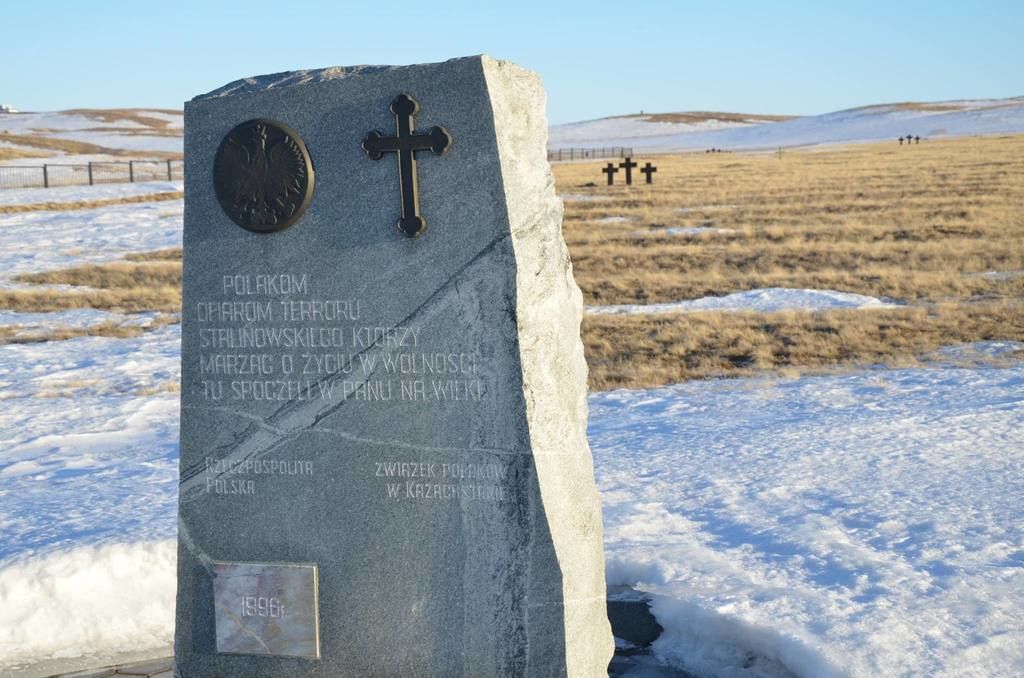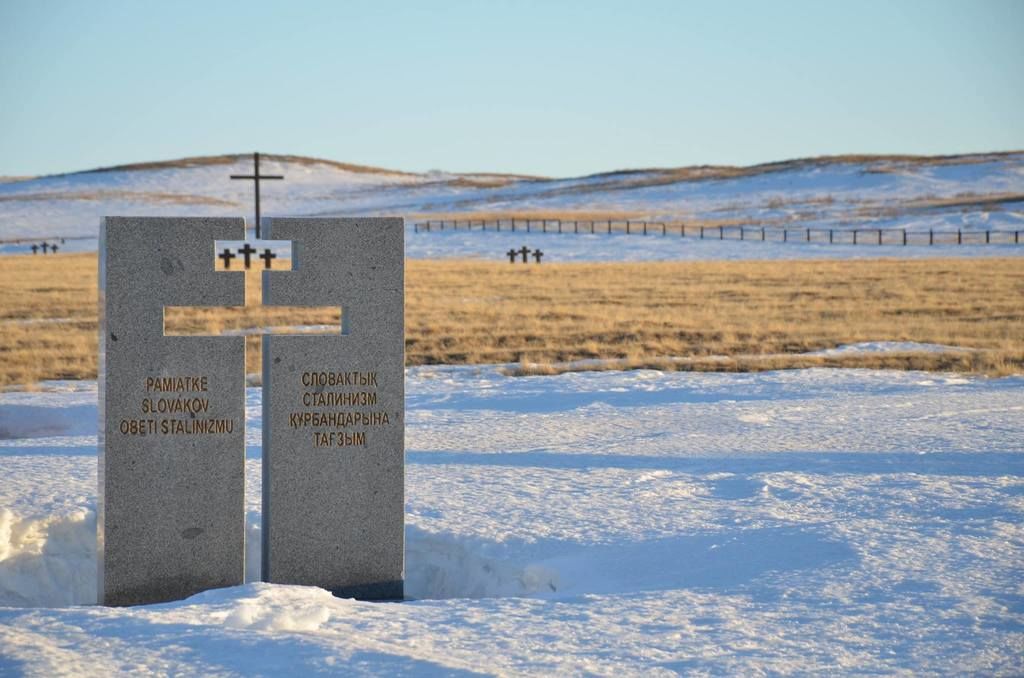Reflections on Soviet repressions in Central Europe
The Gulag and Soviet repressions are part of our common European history.
Viewing the history of the Soviet repressions in a broader perspective, we get to appreciate the sheer range and variety of their victims. They often came from specific social strata, as well as from specific nations. The victims of the Gulag, executions, and deportations included more than one million Germans, approximately 700,000 Poles, and more than 20,000 Czechs, Slovaks, and other Czechoslovak citizens – see the article “Gulag and Soviet repressions: numbers of victims from among Czechs, Slovaks, Poles, and Germans”, which is directly related to this text.
The reasons and the contexts of the individual displays of Soviet repressions were different every time, and to Central European nations, they did not share a ‘common denominator’ in terms of the Soviet Union’s political objectives. Those were surges of repressions with different motives, which play completely different roles in the collective memories of our nations these days. The one thing that all those destinies obviously have in common and that our individual nations and states in this region could share to a greater extent is the experience of the utter ruthlessness of the Soviet regime and its total lack of any respect for the human life and destiny.
Poland
Several targeted operations were undertaken against the Poles in the USSR; the most massive one over the course of 1937–1938 was actually titled the Polish Operation. It cost more than 100,000 people their lives due to executions. Without a doubt, this was the outcome of the permanently tense relations between Russians and Poles inhabiting a territory for which Poland and Russia had competed for centuries. As such, the reason for the massive repressions of Poles may have been imperial, as in an attempt at eliminating any potential resistance towards extending the Soviet (Russian) influence to the detriment of the Polish. The repressions of the Poles continued this tradition in the subsequent years, peaking cynically in the Katyn massacre. Interestingly, the Katyn massacre has become a symbol in Poland of the cruelty of the Soviet repressions against the Poles, although its death toll was actually lower than that of the Polish Operation. One of the reasons is the fact that, in Poland proper, there are many more living relatives of the victims of the Katyn massacre than the relatives of the victims of the Polish Operation (which affected primarily Poles with the Soviet citizenship whose influence on the shaping of the collective memory was not so strong). At any rate, the Soviet repressions have a clear position in the Polish collective memory and have informed the Poles’ relationship to their own history as well as the very cautious and tense relations between Poland and Russia.
An analysis of Polish textbooks prepared under the Gulag XR educational programme concludes that, in the Polish cultural and social environment, the Soviet repressions are a topic that fits well within the broader narrative of the ‘Polish martyrology’ – in the sense that the Polish state and nation are victims of their more powerful neighbours – which is why the memory of the crimes of the communism contributes towards the overall perception of Poland as a victim.1 Polish sovereignty was especially strongly influenced by the Soviet policy, because the nation lost one half of its territory to the Soviet Union and became its vassal state as a result of World War II. As a result, the Stalinism and the Nazi regime are often perceived as equal in Poland. In the Polish historical narrative and memory, the Soviet repressions are often set within a broader context of the complex relations between Poland and Russia both in the past and today. In the current times, the Polish perception of the Soviet Union is influenced by Russia’s neo-imperial foreign policy as well as its ‘revisionist’ and ‘denialist’ tendencies as regards the Soviet heritage and Stalinism.2
Germany
Although the repressions of Germans in the Soviet Union reached a scale comparable with the repressions aimed against the Poles (in fact, the number of German deportees was 300,000 higher than that of the Poles), they obviously do not play a major role in the all-German historical and contemporary narrative, and only attract marginal attention. As illustrated by an analysis of the educational systems undertaken as part of the Gulag XR project, German teachers have quite limited options for discussing the issue in greater depth when teaching about Soviet repressions. Due to a lack of time and space, they can often provide just a basic and cursory view of the Soviet regime’s crimes. There is no room for a thorough analysis of the forced labour camps, their origins and economics, and their victims’ destinies. German textbooks never mention Germans as one of the largest social groups to ever have fallen victims to repressions.3 Germany is a polar opposite of Poland in this regard.
The analysis also shows that school curricula in Germany’s ‘former’ federal lands mention Stalinism in the Soviet Union even less often than those used in the federal lands on the territory of the former German Democratic Republic.
The perception of the Soviet repressions in Germany is obviously burdened by the country’s own Nazi past and the lasting necessity to process it. Unlike Poland, Germany is not used to playing the role of a victim; in contrast, it constantly recalls the importance and meaning of the crimes and the victims of the holocaust. This may be one of the reasons why the topic of Germans persecuted in the Soviet Union has not been accentuated sufficiently. By contrast, textbooks frequently mention that the victims of the Nazi persecution included communists; some secondary school textbooks still commend the struggle for women’s rights in the Soviet Union in the 1920s.4
Czechia and Slovakia
The individual forms of repressions against Czechs, Slovaks, and other Czechoslovak citizens never reached the scale of the repressions of Poles and Germans. Still, their scope may have been the ‘broadest’ in comparison with both. Some Czechs were dekulakized while others were executed during the Great Terror over their ethnic origins (even though no separate Czech operation took place). Some were sent to the Gulag or exiled as refugees, some fell victims to the Katyn massacre, some were deployed on forced labour after the war, and some were deported to the Gulag (even after the war). In a sense, this diversity illustrates the heterogeneity of the Czechoslovak population before World War II. At any rate, none of those forms of repression were sufficiently massive or politically important to the subsequent generations to become a part of the Czech or the Slovak collective memory. Compared with the events of 1968, this historical experience has not been a major factor shaping the relation of the Czech and Slovak public to Russia. Unlike dozens of Polish memorials strewn in former labour camp locations all over the USSR, there are most likely just two Czech memorial sites – one in Zhytomyr (initiated by the local Czech community) and the other in Spassk, Kazakhastan (installed by the Czech embassy in 2018).
Among other things, an analysis of Czech and Slovak textbooks undertaken as part of the Gulag XR project confirms that the topic has been receiving insufficient attention. Even though the topic of the Soviet repressions is covered in the analysed Czech textbooks in general terms, more attention is paid to related events that took place in Czechoslovakia. The relation between the repressions in the Soviet Union and history in Czechoslovakia is treated insufficiently or not at all.5
In Slovakia, the Gulag and Soviet repressions are mentioned occasionally in the curricula and textbooks beginning with the 9th class. The textbooks present the Soviet Union as an example of a totalitarian regime and dictatorship. Having analysed the textbooks that are most frequently used in primary and secondary schools, we can conclude that the actual topic of Soviet repressions is covered in just a few pages, paying virtually no attention to their Slovak dimension.6
Interestingly, the topic of repressions against Czechs was covered in prewar Czechoslovakia. For instance, the period press reported on the developments involving the Czech communes Reflektor and Interhelpo7, and several books describing anti-Czech repressions in the USSR were released, including the novel Moskva – hranice (Moscow–Border) by Jiří Weil. Books and recollections that relate the Soviet terror targeting specific Czechs were also published during the Nazi occupation. Examples include Josef Klička’s Neznámé sověty (Unknown Soviets) and Žil jsem v SSSR (I Lived in the USSR). However, this author was not accepted as relevant due to his pro-Nazi writings during the Protectorate period and was criminally prosecuted for them after the war. The topic virtually disappeared from newspapers and bookstores as well as from the Czech and Slovak collective memory after the war and the communist coup in 1948.
It began making its return to the collective memory very slowly and cautiously. Biography-oriented books written by former members of General Svoboda’s army corps, who had been through the Gulag camps over allegations of crossing the Soviet Union borders illegally prior to joining the Czechoslovak military force in the USSR, started to appear from the 1990s onwards. Vladimír Bystrov was also active, tirelessly commemorating the lives of Czechoslovak citizens of Russian, Ukrainian and Belarusian origins who were deported from Czechoslovakia after the war.
Following the year 2000, historians started to slowly discover and debate the topic of repressions of Czechs and Slovaks. In the Czech environment, this means primarily Professor Mečislav Borák and his ground-breaking papers: České stopy v Gulagu. Z výzkumu perzekuce Čechů a občanů ČSR v Sovětském svazu (2003), Moskevská pohřebiště. Češi a českoslovenští občané popravení v Moskvě v letech 1922–1953 (2013), and Zatajené popravy. Češi a českoslovenští občané popravení na sovětské Ukrajině: z historie Velkého teroru na Volyni a v Podolí (2014). At present, the topic is also being explored by our association, Gulag.cz as well as by the project titled Čechoslováci v Gulagu (Czechoslovaks in the Gulag) developed by the Institute for the Study of Totalitarian Regimes.
The situation is similar in Slovakia. The country’s historians began focusing on this issue after 2000. Slovakia’s Nation’s Memory Institute began compiling a database of Slovak citizens deported to the USSR, and journalist and writer Peter Juščák described the topic aptly in his book, Odvlečení (The Abducted).
It appears that this topic is beginning to resound in the Czech and Slovak cultural environment and that it is just a matter of time before we witness more attempts at processing this difficult topic.
Autor: Štěpán Černoušek, 10. 10. 2023
This text is related to the article Gulag a sovětské represe – počty obětí z řad Čechů, Slováků, Poláků a Němců The Gulag and Soviet repressions: the numbers of victims from among Czechs, Slovaks, Poles, and Germans and was written as additional material *for the Gulag XR educational programme
(1) European Memory of the Gulag – Extended Reality as an Educational Tool. Analysis on the teaching of Soviet repression and the use of new technologies in schools in the Czech Republic, Poland, Germany and Slovakia. (https://gulagxr.eu/media/W1siZiIsIjIwMjIvMDUvMTEvMDUvMDMvMzAvN2I4YjM1N2EtZTJkYi00NzRkLTlmNWUtZGIwOWQ3ZGY1NzAyL0FuYWx5c2lzIC0gRXVyb3BlYW4gTWVtb3J5IG9mIGh0ZSBHdWxhZy5wZGYiXV0/8703946ba61c4510/Analysis%20-%20European%20Memory%20of%20hte%20Gulag.pdf) str. 11↩︎
2) Ibid.↩︎
(3) Ibid., str. 8↩︎
(4) Ibid.↩︎
(5) Ibid., str. 4↩︎
(6) Ibid., str. 13↩︎
(7) See e.g.: Janák, Dušan, Jirásek, Zdeněk: Z historie vystěhovaleckých družstev v Sovětském svazu (1923–1939), Opava: 2013↩︎



